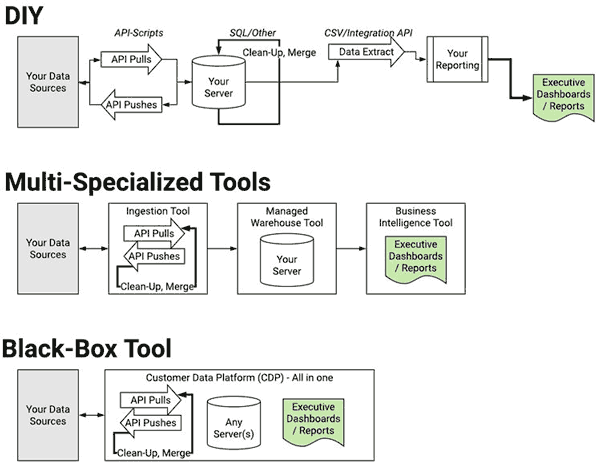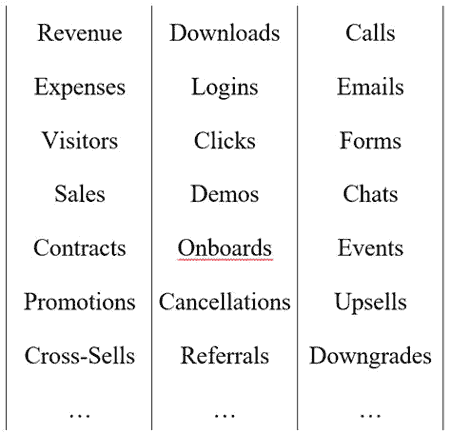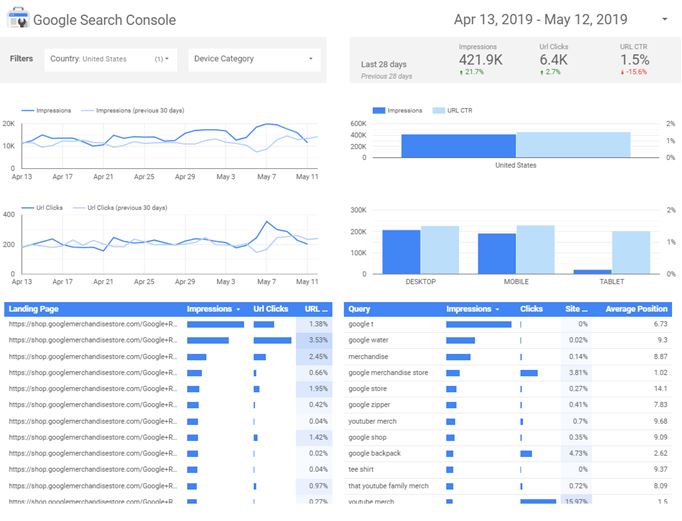Business intelligence is a comprehensive analytics solution for all of your data that helps your team better understand the levers that impact the customer journey.
Most smart companies want to work off of reliable data to make decisions for their business – and we here at CallSource are no different. But, for CallSource to work off of better data, insights, and measurable decisions, we had to build a complete information system from the ground up. Having a business intelligence strategy enables our marketing team to be connected to the activities that drive performance.
Accountability in marketing is often an ironic statement, as it is one of the hardest departments to prove dollar-for-dollar attribution for. Yet, at the end of the day, if you want your marketing department to be a profit center, you need to be equipped to answer some tough attribution related questions.
Question: Why bother with business intelligence?
Setting up a data warehouse (a soft CDP) involved a lot of work in a territory that I personally was unfamiliar with. Nobody said, “Go get us a data warehouse and BI solution,” because we are a two decades old company and we’ve got reports that everyone is used to seeing. Still, I felt that our reports could be more robust; the current ones didn’t tell enough of the context.
 Numbers without the extra context do not explain the ‘why.’ Sure, you want to know what happened – that’s great, and there are plenty of anecdotal reasons for why something happened. But can anything as big as monthly or yearly results be explained in a few sentences? No, sorry. That’s like saying (spoilers) Frodo got the ring and then he destroyed the ring, and that is the story of Lord of the Rings. How many people would pay to see that version of the movie?
Numbers without the extra context do not explain the ‘why.’ Sure, you want to know what happened – that’s great, and there are plenty of anecdotal reasons for why something happened. But can anything as big as monthly or yearly results be explained in a few sentences? No, sorry. That’s like saying (spoilers) Frodo got the ring and then he destroyed the ring, and that is the story of Lord of the Rings. How many people would pay to see that version of the movie?
Data decision making flows along a maturity curve as businesses start to demand answers to more complex questions. CallSource, like any business, was on the maturity curve and had been using data for decades – but it was missing a lot of that valuable context. The trouble is, you don’t know how valuable that context could be, and until the past few years, the costs were outrageous to find out.
Question: How to create a business intelligence information system?
 CallSource is lucky to have a robust analytics department with data science-equipped colleagues that saw the marketing department’s project for what it was – awesome. I chuckle at that, but they also gave us ‘the talk’ where they explained the level of detail and sophistication that might be required.
CallSource is lucky to have a robust analytics department with data science-equipped colleagues that saw the marketing department’s project for what it was – awesome. I chuckle at that, but they also gave us ‘the talk’ where they explained the level of detail and sophistication that might be required.
You’ve basically got three choices:
- DIY (Heavily relies on having engineers and developers)
- Multi-specialized tools (Relies on finding the right tools and making sure they play nice)
- Black-box (A single tool that does it all)
DIY
DIY essentially means setting up your own servers and running your own ingestions and building your reports yourself. You would be gathering the data yourself and organizing it into pretty tables that you can use for reporting. You need expertise in APIs for ingestion, SQL (or similar) for transformations, and someone who knows a thing or two about ETL’s and ELT’s for warm and cold data storage solutions.
Multi-specialized tools
Multi-specialized tools are when you ‘outsource’ those specific jobs to a tool that is designed for it. You are replacing your API developers with ingestion tools, some or all of your SQL and Transformation expertise into GUI interfaces (as needed), and relying on a warehouse managing tool to make sure you have the storage and quick access you require.
Black-box
A black-box tool is one that does everything for you but does require a strong partnership and collaboration to ensure that the data they are reporting on is both the truth and what you needed.

Question: Where to get started with a business intelligence strategy?
Our marketing team leaned heavily on the analytics team to help us plan our steps to getting a business intelligence environment set up. The steps evolved over time as we ran into roadblock after roadblock, but they were still valuable for any company looking to step up its data maturity:
Step 1: Modeling your data for free (not really free)
 The first step is writing down all of the important metrics (KPIs) that you need so you can understand what systems you need to pull data from. You DO NOT want to pull everything from everything. In many cases, you will feel like you don’t know what you don’t know until you pull data, but you will still need an idea of what you are looking for. Ask yourself, “What do we use this tool for?” and then write it down. There is a lot of data you and your boss can look at, but it will have no value – we call them ‘vanity metrics.’ A great exercise for after you’ve got your exhausted list is to ask yourself, “If I had to pick 10 of these, which are the most important 10?”
The first step is writing down all of the important metrics (KPIs) that you need so you can understand what systems you need to pull data from. You DO NOT want to pull everything from everything. In many cases, you will feel like you don’t know what you don’t know until you pull data, but you will still need an idea of what you are looking for. Ask yourself, “What do we use this tool for?” and then write it down. There is a lot of data you and your boss can look at, but it will have no value – we call them ‘vanity metrics.’ A great exercise for after you’ve got your exhausted list is to ask yourself, “If I had to pick 10 of these, which are the most important 10?”
Next, how do you need to see that data? This is the fun part – you’ve got your KPI’s, and now you need to “Jeopardy” those metrics. Basically, you need to turn all of your metrics into questions that you need answers for. An example is starting with the KPI = Phone Calls, and then asking yourself, “What do you need to know about phone calls?” To which, you might respond, “How many phone calls are my team handling every day?” That is a great question! With a question like that you can know exactly what kind of chart you need and how you need to visualize that data. See the example parsed below:
How many phone calls are my team handling every day?
(Red) ‘How Many’ – this tells you that they are looking for a volume (like a sum).
(Blue) ‘Phone Calls’ – this tells you what metric they need the volume of (a metric).
(Orange) ‘My Team’ – this tells you that this data will be scoped for their team (a dimension).
(Green) ‘Handling’ – this tells you more about the metric, it needs to be handled calls.
(Underlined) ‘every day’ – this tells you the time frame (many charts have a time basis).
 You can get all of this and model it for free using Google Data Studio. That is where we started for months as we built our dashboards, reports, and more. You can export your data and either upload it to Google Data Studio or you can put it into Google Sheets and import from there. The learning curve on Google Data Studio is moderate – you should definitely watch the plethora of videos and guides on how to get started.
You can get all of this and model it for free using Google Data Studio. That is where we started for months as we built our dashboards, reports, and more. You can export your data and either upload it to Google Data Studio or you can put it into Google Sheets and import from there. The learning curve on Google Data Studio is moderate – you should definitely watch the plethora of videos and guides on how to get started.
Step 2: Proving your data is worth getting a BI strategy for.
You’ve got to measure the performance of your business over time. You also need to understand the components that feed into your business and affect your ability to take actionable steps after. A metric is worthless unless you are willing and capable of doing something actionable from it. Otherwise, what is the point of making it important enough for a report? If they help me understand the context so that I can make a better decision…then we are onto something.
Here is just an example of how some of the reports can look in Google Data Studio with some line charts, bar charts, filters, single/data, and pivot tables:

 We had our data modeled (months later), and our team was getting used to seeing the reports similar to the example above. Week after week, the KPI’s became more and more refined, and everyone started asking for the report. The team and other leaders wanted to see it. Soon everyone started asking questions they had never asked before… questions that required context. For an analyst, this was the ‘superhero’ moment when you see your call sign beamed into the clouds.
We had our data modeled (months later), and our team was getting used to seeing the reports similar to the example above. Week after week, the KPI’s became more and more refined, and everyone started asking for the report. The team and other leaders wanted to see it. Soon everyone started asking questions they had never asked before… questions that required context. For an analyst, this was the ‘superhero’ moment when you see your call sign beamed into the clouds.
While there was data and everyone was curious to see it, now it came time for the value. We had to prove that there was value in data and in seeing this information for our team. The data had to be at least, if not more, valuable than the cost of the tools and efforts it takes to put this together. Remember, marketing is and wants to be a profit center, not a cost center, so everything has to be profit-justified. So how does having better reporting translate into better decisions and insights that recuperate the costs? That was the tricky part.
 The answer is to experiment: you learn from the data and then test a project with a new theory to see if it had an impact. With data, we could now measure our impact and influence better than ever before. A lot of things happened over the course of the year it took for this stage to resolve including:
The answer is to experiment: you learn from the data and then test a project with a new theory to see if it had an impact. With data, we could now measure our impact and influence better than ever before. A lot of things happened over the course of the year it took for this stage to resolve including:
- Running tests and then realizing that things we didn’t foresee made those tests worthless
- Learning of new processes we had to add because of the data we had
- Running tests and then being misled by the data because we didn’t understand our data that well
- Not running tests and then realizing we should have
The up and downs are part of the ‘maturing’ of having data you never thought possible and then being able to do things with it. I speak of this as the joy that marketers enjoy when they have clean and clear data about the things we are in charge of.
Step 3: Finding the right tools, DIY, and black-box solution for your business.
This section is going to be short and sweet because there isn’t a one-size-fits-all for every business. Every business has complex needs, and we have shifted our direction dozens of time before arriving at our current solutions. I’m not even sure any solution is the be-all end-all solution because this space is shifting and becoming more specialized. In full transparency, I can say that we love our providers and decided to go with a multi-specialized tool solution because it fits where we are as a business. Those tools include Xplenty, Panoply, and MODE analytics.
Question: We are a call tracking company – why does business intelligence matter enough to write about?
Great question, it’s because our company has obstacles like any other business. We are all trying to sell more, be more efficient, and come up with the latest and greatest solution for our future customers. The marketing department went through a pain-staking but valuable experience in finding a business intelligence solution that fits our organization. There isn’t a whole lot of information out there for the laymen’s (where we started), and so this is a post encouraging you and your company to do it. You can do it!
It’s who we are!
Like our clients who see their phone call data for the first time, we know how important it is to have accurate and insightful data. We also can’t begin to tout our vision that we are all about being recognized as the gold standard for actionable analytics unless that culture exists internally as well as externally. We believe that data can transform a business and can lead to consistent and reliable results.
Curious about this? Find me on LinkedIn or shoot us a message and I will be happy to connect with you.

